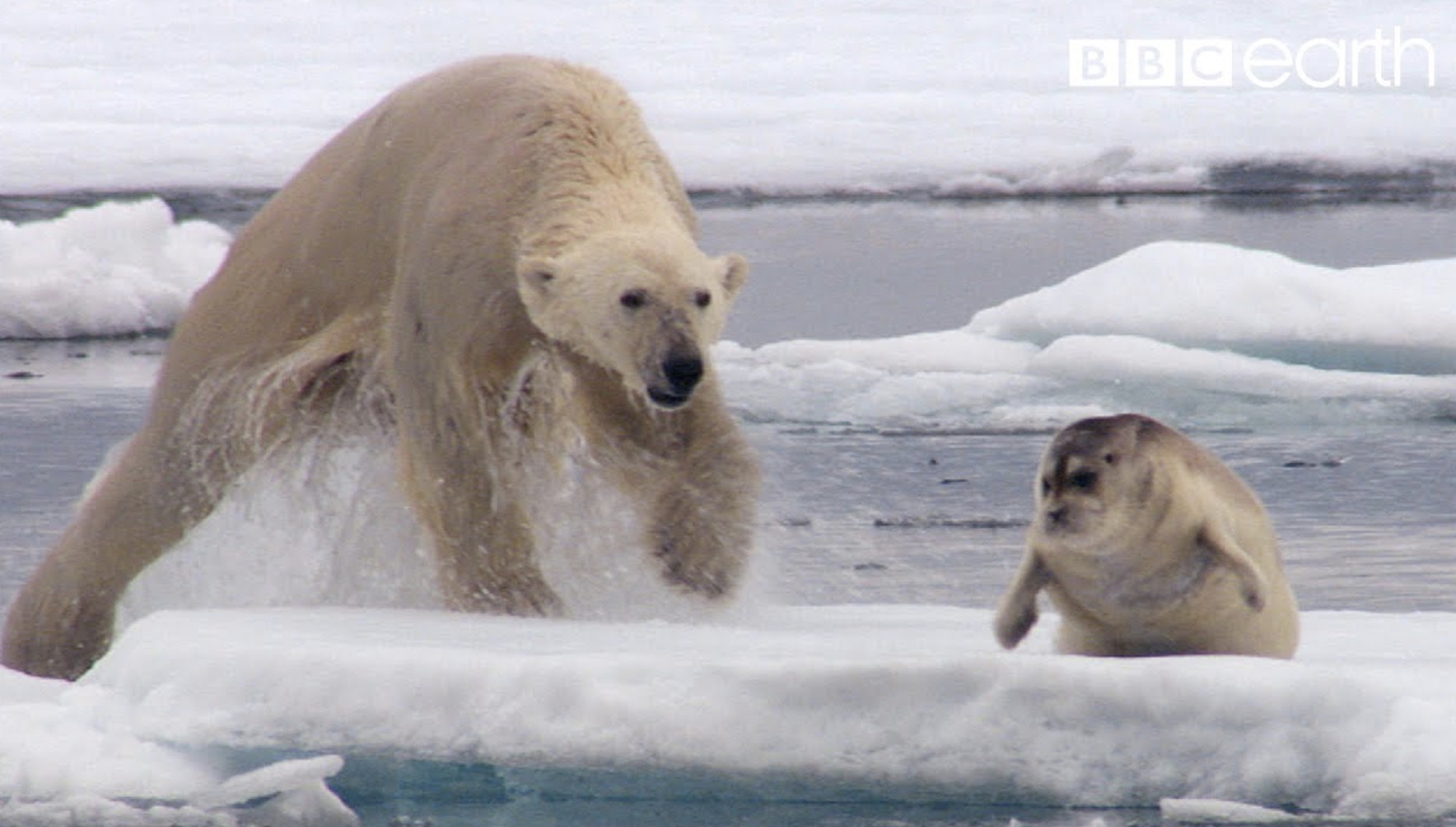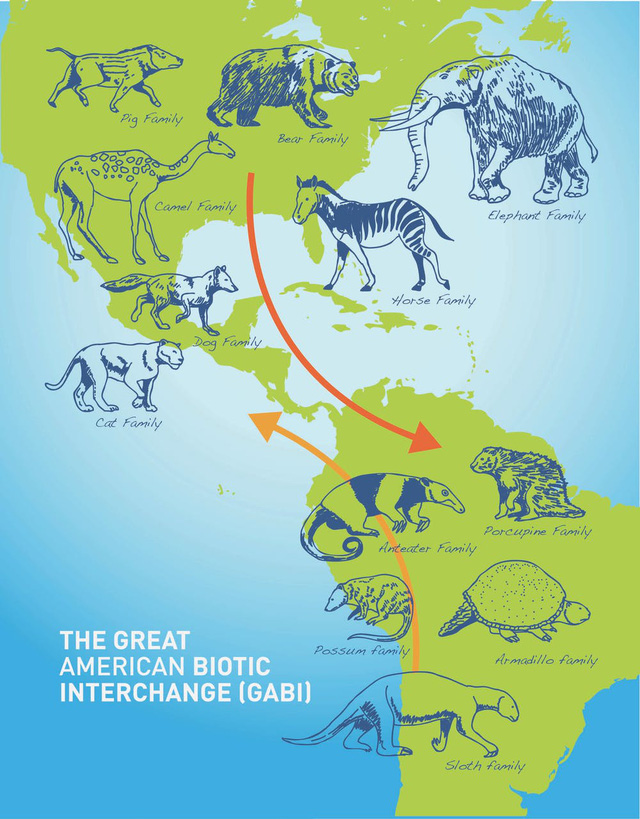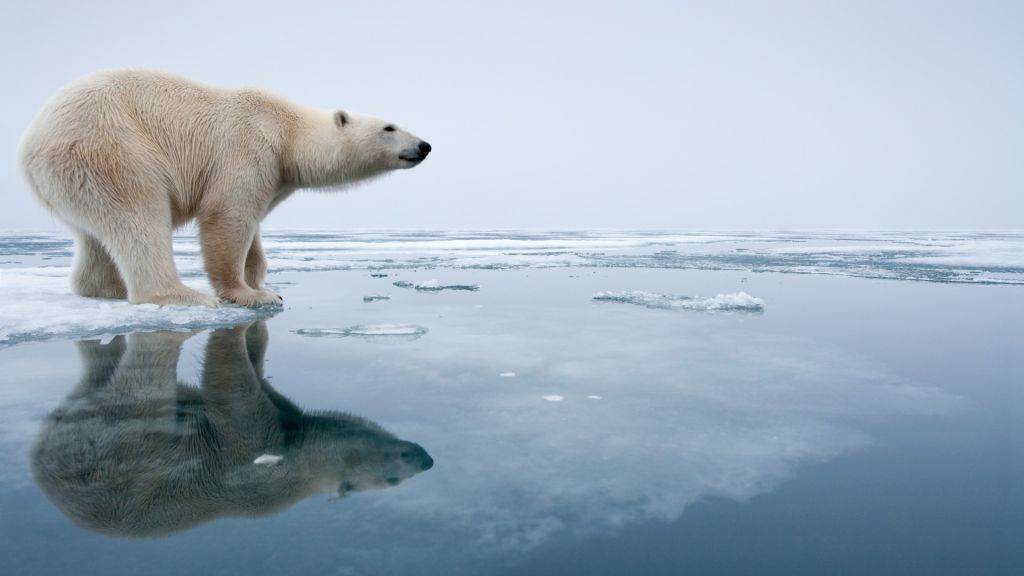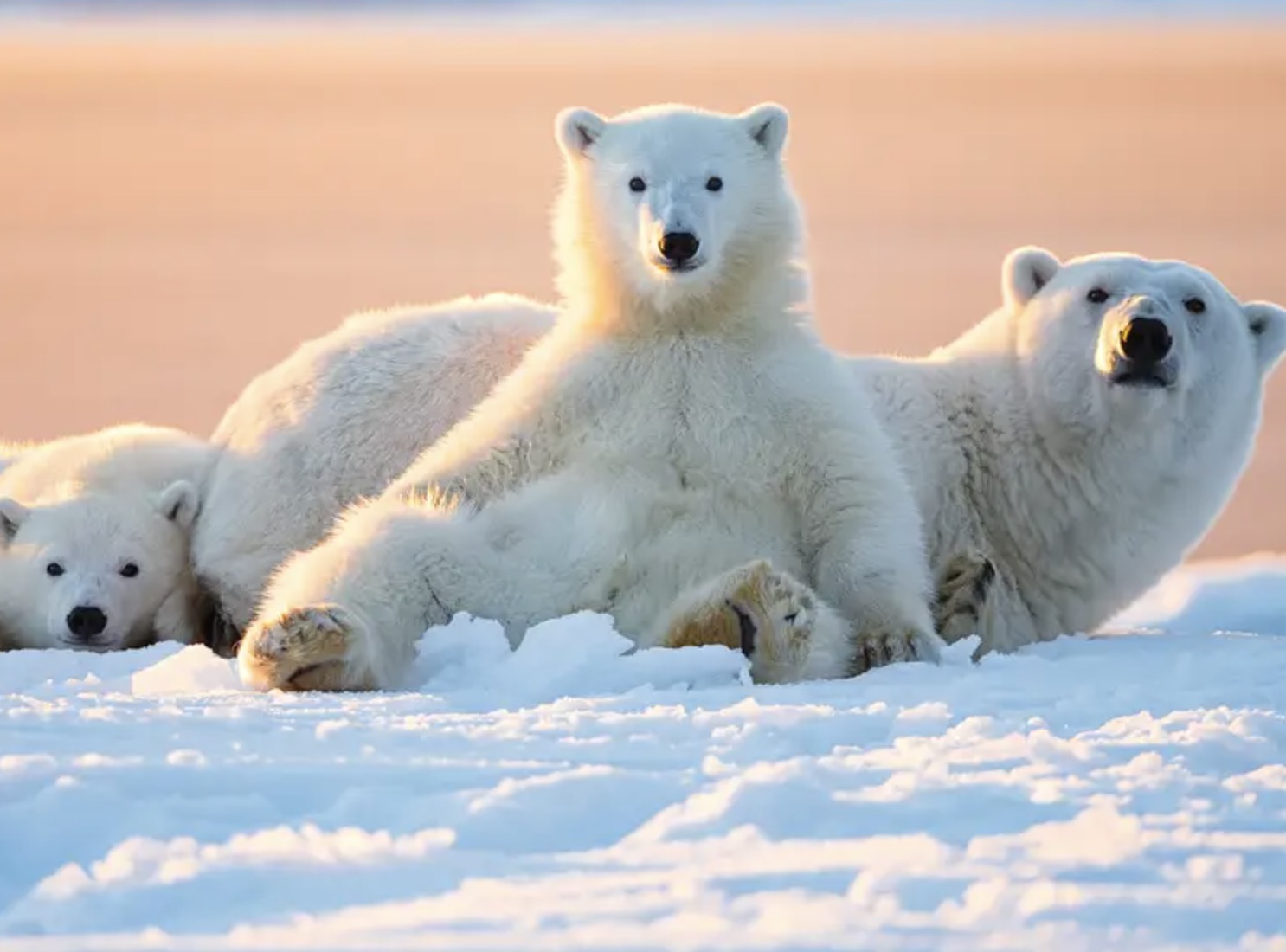The North Pole and the South Pole, although similar in some ways, are inhabited by different organisms. Both poles are home to many species of seals and whales, but only the North Pole is home to the largest bear species on Earth, the polar bear.
Polar bears (scientific name: Ursus maritimus) live around the Arctic Circle in Alaska, Canada, Greenland, Norway, Russia and sometimes Iceland. The polar bear’s white fur is especially suitable for temperatures that can drop below minus 30 degrees Celsius. Most of their lives, they live on ice, the polar bear’s favorite food is seals because this animal is rich. fat, which helps them fuel up for a long time before they can hunt for their next meal.

The polar bear’s favorite food is seals
Antarctica also has sea ice, cold temperatures and seals. So why aren’t there any polar bears on the southernmost continent?
The answer concerns the evolution and geological history of the Earth.
Sometimes, the shifting of the land creates chaos among the different species. The Great American Biological Interference Event is a prominent example of this. Plate tectonics brought North and South America together, and species from each continent met in Central America. South America received many new species of animals, including predators such as bears and big cats, while North America adopted species such as the ground sloth and the armadillo’s ancient relative, the glyptodont.

America’s Great Biodiversity Event
However, Andrew Derocher, a biology professor at the University of Alberta in Canada, who has studied polar bears for nearly 40 years, said:Bears are largely a species of the Northern Hemisphere. In addition to the Andean short-faced bear (scientific name: Tremarctos ornatus) of South America, bears occur only in the Northern Hemisphere. There’s no particular reason for this, it’s just that some species evolve in some places and others don’t.”. Derocher said: “Biogeography is full of quirks. There are species that get to new places, and those that can’t.”
In particular, for polar bears, never in their evolutionary history have the North and South poles been connected by ice or land.
People often say polar bears are “the largest terrestrial carnivores in the world, but they hardly live on land,” Derocher said. These bears live on sea ice most of their lives, only coming ashore occasionally to breed.

Polar bears live on sea ice most of their lives, coming ashore only occasionally to breed.
Evolutionarily, the polar bear is a relatively young species. They evolved from a common ancestor of brown bears (Ursus arctos) between 5 million and 500,000 years ago, Derocher said. But even 5 million years ago, the continents were in the same position as they are today, so polar bears never got the chance to go from pole to pole.
The closest land to Antarctica is the southern tip of South America, which includes Chile and Argentina. To get to the South Pole, polar bears will have to cross the perilous Drake Passage. The area is also known for strong storms and rough seas because cold water from the south meets warm water from the north.
The final question is if polar bears somehow had a chance to reach the South Pole, would they survive?
According to Derocher, the answer is simple: “They will live happily in Antarctica.”

Antarctica is said to be an excellent habitat for polar bears
In the Arctic, polar bears eat seals and occasionally birds or eggs. Antarctica has many similar species, with six species of seals and five species of penguins. Plus, no animal in Antarctica has evolved to be as wary of large, mobile predators on the ice as bears. Antarctica could become a big party for polar bears if they are brought here, which is why no one has plans to bring polar bears to the South Pole.
Their gluttony, combined with native animals’ ignorance of large terrestrial predators, can lead to ecological collapse. After all, it is best for this great white bear to live only in the Arctic, where animal ecosystems have evolved to adapt to their presence.
Reference: LiveScience
